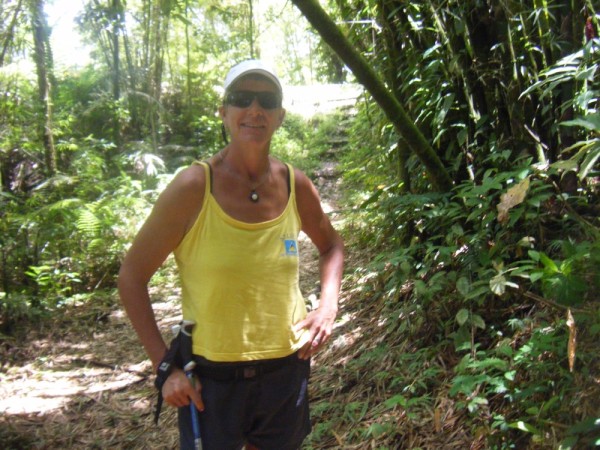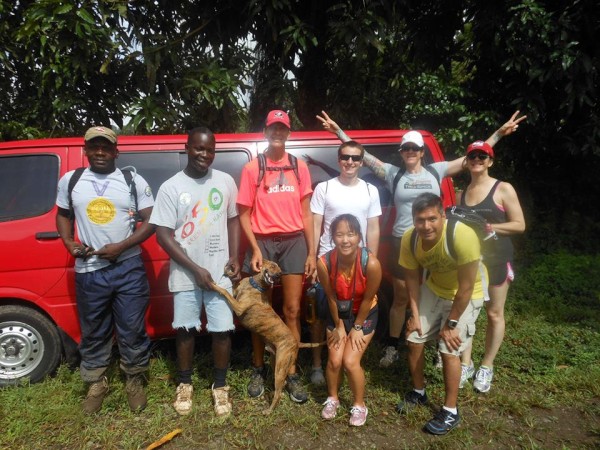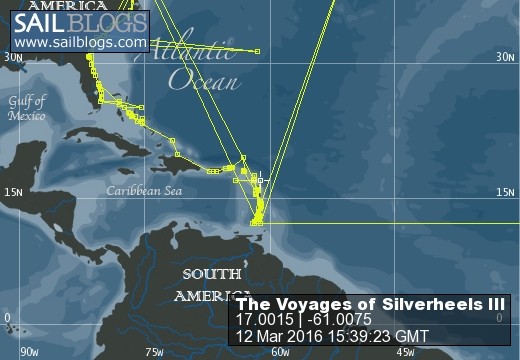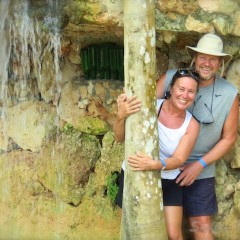
The Voyages of s/v Silverheels III
...a virtual ship's logbook, and some thoughtful (unabashed?) reflections on our sea-going experiences.
04 November 2017 | Somewhere in the Eastern Caribbean
18 October 2017 | Le Marin, Martinique in the French West Indies
25 January 2017 | Gosier, Guadeloupe
19 January 2017 | Le Gosier, Guadeloupe
19 January 2017 | Le Gosier, Guadeloupe
19 January 2017 | St Pierre, Martinique
06 January 2017
01 January 2017 | Fort Du France, Martinique
28 December 2016 | Grand Anse d'Arlet, Martinique
24 December 2016
14 November 2016 | St Anne, Martinique
06 October 2016 | St Anne, Martinique
04 October 2016
20 July 2016 | Rodney Bay, St Lucia
15 June 2016
15 June 2016
13 June 2016
13 June 2016 | Grand Anse d'Arlets
13 June 2016 | Grand Anse d'Arlets
09 May 2016 | Deshaies, Guadeloupe
As we enter our fifth year of cruising...
25 September 2012 | Mt hartman Bay, Grenada
Lynn

Admittedly, this one is a week late. This is the annual "what have we learned while cruising" blog. As surprising as this concept may be to some, one can still be a cruiser, and learn something, even while staying still.
I suppose that's the first thing to admit we've learned: We are liveaboards first, cruisers second. Since we lived aboard year-round in Toronto for five years before leaving the dock to go cruising, we are comfortable with the concept of the boat as our only home. We have been full-time liveaboards for nine years (and starting our tenth!). We have had people decrying the fact that Silverheels III hasn't left our mooring here in Grenada in over a year...big deal! There were things to do, I studied for my PADI Divemaster certification, and generally did what we wanted to do. That doesn't mean we aren't cruisers, we just took advantage of our beautiful Grenada, while very secure on our mooring. I think some people actually feel the need to keep moving; boat life is a means to an end, to travel and see things. We see ourselves primarily as liveaboards, cruising is secondary. For us, home really is where the boat is, and we truly like living on a boat, regardless of whether we are going from one port to another, or being less nomadic.
Boarding ladders: Our boat is old enough to not have a swim platform as part of the original design, or a sugar scoop. She did come with a boarding ladder on the transom. We discovered long ago that a boarding ladder on the side is much easier... we know someone with a sugar scoop who has a boarding ladder on the side of his boat, too, as it is easier to get onto the boat that way. "Normally" we face into the wind and waves in an anchorage, so the boat will do more of a mild pitch than a roll - this is not conducive to climbing a transom ladder, especially with a reverse shear angle. Also, many boats have exhaust pipes, wind pilots and other things poking out of the transom, perfect for holing an inflatable dinghy. We believe that ladders on the side are much easier and safer if you don't have a big platform with plenty of handholds.
Power Generation: Back to this topic... it is not only generating capacity, but also the battery bank on board. Really, if you require a method of generating power that must be able to work 24/7 to satisfy your power requirements, maybe the battery bank is undersized. We have seen boats run generators for three hours or more each day. It's nothing to do with being underway or at anchor, this is everything to do with having the electrical power when you need it. Regardless of whether we are moving or stationary, our solar panels keep our battery bank well enough charged, so we don't need to worry about generating power at night, and we have the battery capacity to go a couple of days without a charge if necessary.
This morning we got to listen to the "burping" sounds (of the exhaust) of someone running their diesel generator, the nuisance clattering of a gas generator and the whine of a wind generator from the boats around us. Our boat was also charging the batteries - SILENTLY.
Provisioning: At one time, it may have been difficult to find the things you want, but it has become much easier. Working off the top of my head, there are IGA's in St. Lucia, Dominica, Antigua and Grenada providing many of the products North Americans feel comfortable with. Just don't expect the same prices as at home. St. Martin has a number of supermarkets, as do Guadeloupe and Martinique, that can give you your European commodity fix. Trinidad has shopping malls to rival North American ones, according to our good friends down there. St John's in the USVI's has Home Depot and other such stores, and certainly Puerto Rico has it all, including Walmart. However, the smaller islands such as in the Grenadines still have the smaller, local-style stores that are comparable to small convenience stores back home. Stock up where it is cheap and plentiful, and top up where necessary.
If you find something you really like, stock up on it. We really like the Guava drink concentrate from Baron's Foods (amazing on pancakes and French toast!)... but you can only get it in St Lucia that we have seen so far. Nutmeg syrup is a Grenada thing (and we admit that we now like it just as much as maple syrup, which we didn't think could be possible when we first heard about it). Our favourite rum has not been found anywhere but in St Lucia (good thing we have enough until we get back up there this year). Basically, stock up on the unique items you like that you haven't seen elsewhere.
Don't Trust Electronic Charts Implicitly! We had a boat run aground on a reef because they trusted their electronic charts above everything else, including their own eyes, and the navigational buoys that were very obvious. Okay, some places the buoys are terrible, but sometimes they can give a bit of a guideline (just don't come too close to the edge of the channel). GPS technology is wonderful, and it can tell you your location within feet, but that does not mean the charts on the plotter or computer are that accurate! This is not a GPS system for a car where the maps are constantly upgraded and are quite accurate, some of the charts for the world are only slightly more up to date than when Captain Cook initially surveyed them. Use the charts as a guide, then use eyeball navigation to get past the reefs.
Cooking: Just to say that I really do like having a good pressure cooker and having silicone loaf and cake pans. I can do a roast in the pressure cooker very nicely in an hour in total, plus pressure cooking conch/lambi decreases the necessity for pounding it. The silicone stuff doesn't rattle, and it is easy to clean... and it can't rust, so a salt water soak won't hurt it. The collapsible silicone bowls, colanders and measuring spoons simply take up less space.
Smart Phones Cell phone plans really aren't all that bad down here. Smart phone technology is very useful for cruisers, in my opinion. We have a Blackberry (I am used to them and like the keyboard), and others have Androids or iPhones. It comes down to a question of what apps you may want to use, but we really like the convenience of getting emails anywhere without having to fire up a computer. We get NOAA storm updates, weather forecasts and general emails right to the phone, and of course there is the browser. Even if there is no WiFi available, we can still communicate and get the info we want. I know that with the Android, you can get charts of the Caribbean inexpensively, and I think you can for the iPhone, too. Great for rum shop discussions.
Social Media for Cruisers There is no doubt that social media has had a large impact on cruising life. Whether as a way to stay in contact with distant friends and family, or if one is a member of any of the Facebook Cruiser Groups that have mushroomed in the past 16 months. It has made getting help and information easier. I think that it is changing the way security info is exchanged, as it can give quick feedback and questions can be asked, as well, updates are usually more immediate.
Security Lock it or lose it. Spend the money to effectively lock your dinghy up - insurance might pay for the replacement, but in the meantime getting from the boat to shore is going to be a hassle.
Shipping it is inevitable that at some point you will have to get something from back home, or ship something back. The cheapest way to do so is by mail. Getting mail out of the Caribbean countries might be quite quick, but it can sometimes take a little time for it to get in. Couriers aren't as economical, but they get the job done most of the time - I will confess to a lack of confidence in UPS in the Lesser Antilles as they work with LIAT, and personally speaking, I have had few good experiences with either of them. FedEx and DHL have been terrific so far. For the big stuff, container ship is really your only option. Most of the OECS countries (I cannot say for a fact all of them as I haven't had the experience) allow duty free goods for visiting boats - a huge savings for us. St Martin is a Duty Free place, and for American shippers, the USVI's and Puerto Rico are considered part of the U.S.A., which makes parcel post a great option there.
That pretty much is what comes to mind this year. Again, this is all our opinion, and learned through our own experiences, so it should not be taken as "gospel" .... a grain of salt would work.
I suppose that's the first thing to admit we've learned: We are liveaboards first, cruisers second. Since we lived aboard year-round in Toronto for five years before leaving the dock to go cruising, we are comfortable with the concept of the boat as our only home. We have been full-time liveaboards for nine years (and starting our tenth!). We have had people decrying the fact that Silverheels III hasn't left our mooring here in Grenada in over a year...big deal! There were things to do, I studied for my PADI Divemaster certification, and generally did what we wanted to do. That doesn't mean we aren't cruisers, we just took advantage of our beautiful Grenada, while very secure on our mooring. I think some people actually feel the need to keep moving; boat life is a means to an end, to travel and see things. We see ourselves primarily as liveaboards, cruising is secondary. For us, home really is where the boat is, and we truly like living on a boat, regardless of whether we are going from one port to another, or being less nomadic.
Boarding ladders: Our boat is old enough to not have a swim platform as part of the original design, or a sugar scoop. She did come with a boarding ladder on the transom. We discovered long ago that a boarding ladder on the side is much easier... we know someone with a sugar scoop who has a boarding ladder on the side of his boat, too, as it is easier to get onto the boat that way. "Normally" we face into the wind and waves in an anchorage, so the boat will do more of a mild pitch than a roll - this is not conducive to climbing a transom ladder, especially with a reverse shear angle. Also, many boats have exhaust pipes, wind pilots and other things poking out of the transom, perfect for holing an inflatable dinghy. We believe that ladders on the side are much easier and safer if you don't have a big platform with plenty of handholds.
Power Generation: Back to this topic... it is not only generating capacity, but also the battery bank on board. Really, if you require a method of generating power that must be able to work 24/7 to satisfy your power requirements, maybe the battery bank is undersized. We have seen boats run generators for three hours or more each day. It's nothing to do with being underway or at anchor, this is everything to do with having the electrical power when you need it. Regardless of whether we are moving or stationary, our solar panels keep our battery bank well enough charged, so we don't need to worry about generating power at night, and we have the battery capacity to go a couple of days without a charge if necessary.
This morning we got to listen to the "burping" sounds (of the exhaust) of someone running their diesel generator, the nuisance clattering of a gas generator and the whine of a wind generator from the boats around us. Our boat was also charging the batteries - SILENTLY.
Provisioning: At one time, it may have been difficult to find the things you want, but it has become much easier. Working off the top of my head, there are IGA's in St. Lucia, Dominica, Antigua and Grenada providing many of the products North Americans feel comfortable with. Just don't expect the same prices as at home. St. Martin has a number of supermarkets, as do Guadeloupe and Martinique, that can give you your European commodity fix. Trinidad has shopping malls to rival North American ones, according to our good friends down there. St John's in the USVI's has Home Depot and other such stores, and certainly Puerto Rico has it all, including Walmart. However, the smaller islands such as in the Grenadines still have the smaller, local-style stores that are comparable to small convenience stores back home. Stock up where it is cheap and plentiful, and top up where necessary.
If you find something you really like, stock up on it. We really like the Guava drink concentrate from Baron's Foods (amazing on pancakes and French toast!)... but you can only get it in St Lucia that we have seen so far. Nutmeg syrup is a Grenada thing (and we admit that we now like it just as much as maple syrup, which we didn't think could be possible when we first heard about it). Our favourite rum has not been found anywhere but in St Lucia (good thing we have enough until we get back up there this year). Basically, stock up on the unique items you like that you haven't seen elsewhere.
Don't Trust Electronic Charts Implicitly! We had a boat run aground on a reef because they trusted their electronic charts above everything else, including their own eyes, and the navigational buoys that were very obvious. Okay, some places the buoys are terrible, but sometimes they can give a bit of a guideline (just don't come too close to the edge of the channel). GPS technology is wonderful, and it can tell you your location within feet, but that does not mean the charts on the plotter or computer are that accurate! This is not a GPS system for a car where the maps are constantly upgraded and are quite accurate, some of the charts for the world are only slightly more up to date than when Captain Cook initially surveyed them. Use the charts as a guide, then use eyeball navigation to get past the reefs.
Cooking: Just to say that I really do like having a good pressure cooker and having silicone loaf and cake pans. I can do a roast in the pressure cooker very nicely in an hour in total, plus pressure cooking conch/lambi decreases the necessity for pounding it. The silicone stuff doesn't rattle, and it is easy to clean... and it can't rust, so a salt water soak won't hurt it. The collapsible silicone bowls, colanders and measuring spoons simply take up less space.
Smart Phones Cell phone plans really aren't all that bad down here. Smart phone technology is very useful for cruisers, in my opinion. We have a Blackberry (I am used to them and like the keyboard), and others have Androids or iPhones. It comes down to a question of what apps you may want to use, but we really like the convenience of getting emails anywhere without having to fire up a computer. We get NOAA storm updates, weather forecasts and general emails right to the phone, and of course there is the browser. Even if there is no WiFi available, we can still communicate and get the info we want. I know that with the Android, you can get charts of the Caribbean inexpensively, and I think you can for the iPhone, too. Great for rum shop discussions.
Social Media for Cruisers There is no doubt that social media has had a large impact on cruising life. Whether as a way to stay in contact with distant friends and family, or if one is a member of any of the Facebook Cruiser Groups that have mushroomed in the past 16 months. It has made getting help and information easier. I think that it is changing the way security info is exchanged, as it can give quick feedback and questions can be asked, as well, updates are usually more immediate.
Security Lock it or lose it. Spend the money to effectively lock your dinghy up - insurance might pay for the replacement, but in the meantime getting from the boat to shore is going to be a hassle.
Shipping it is inevitable that at some point you will have to get something from back home, or ship something back. The cheapest way to do so is by mail. Getting mail out of the Caribbean countries might be quite quick, but it can sometimes take a little time for it to get in. Couriers aren't as economical, but they get the job done most of the time - I will confess to a lack of confidence in UPS in the Lesser Antilles as they work with LIAT, and personally speaking, I have had few good experiences with either of them. FedEx and DHL have been terrific so far. For the big stuff, container ship is really your only option. Most of the OECS countries (I cannot say for a fact all of them as I haven't had the experience) allow duty free goods for visiting boats - a huge savings for us. St Martin is a Duty Free place, and for American shippers, the USVI's and Puerto Rico are considered part of the U.S.A., which makes parcel post a great option there.
That pretty much is what comes to mind this year. Again, this is all our opinion, and learned through our own experiences, so it should not be taken as "gospel" .... a grain of salt would work.
Comments
| Vessel Name: | Silverheels III |
| Vessel Make/Model: | Hinterhoeller, Niagara 35 Mk1 (1979) |
| Hailing Port: | Toronto |
| Crew: | Lynn Kaak and Ken Goodings |
| About: | After five summers and winters living on our boat in Toronto Harbour, we've exchanged those cold Canadian winters for Caribbean sunshine. "Nowadays, we have ice in our drinks, not under the boat." |
| Extra: |
The completely biased and unabashed musings from the crew of Silverheels III
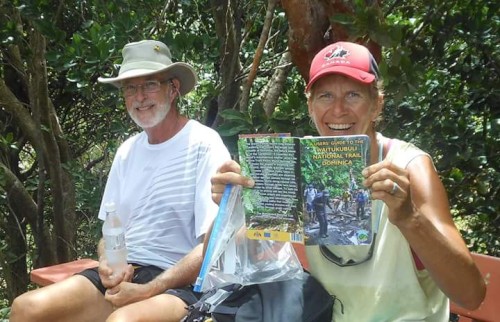
Who: Lynn Kaak and Ken Goodings
Port: Toronto














